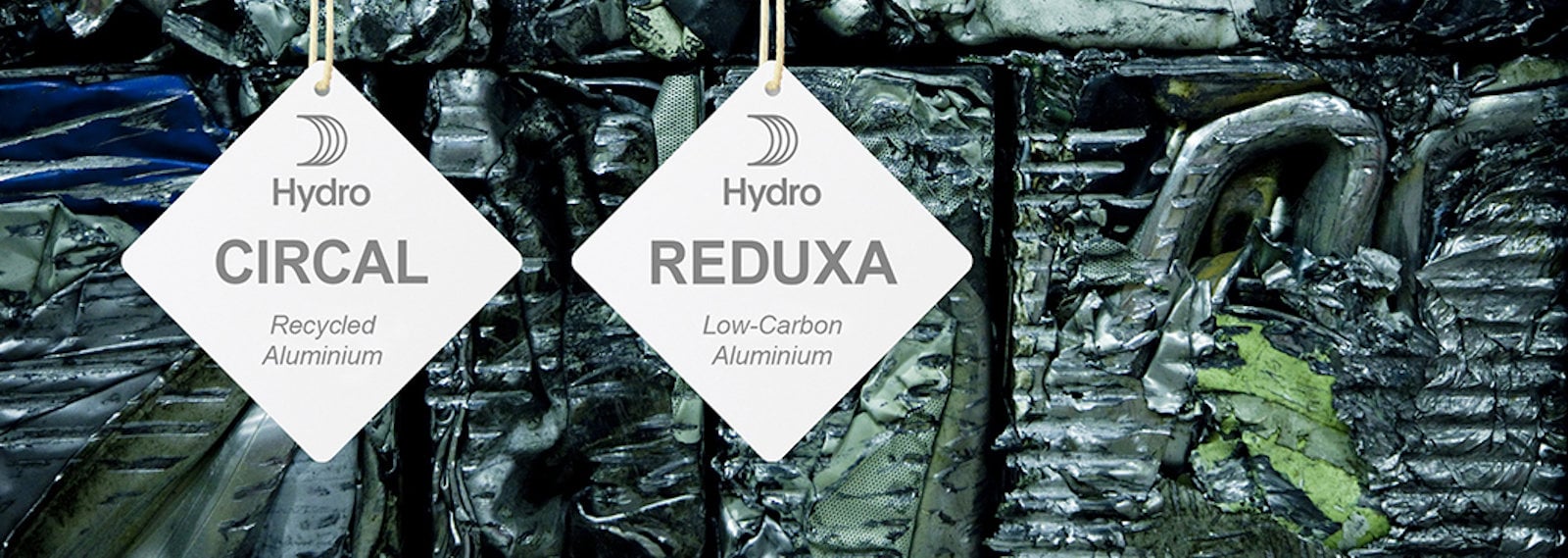Reduce your carbon footprint with low-carbon aluminium
You can reduce the carbon footprint of your product by applying the right materials the right way. When you want to use aluminium, you should start by using the aluminium that has a light footprint.
Every so often, consumers will want to know the carbon footprint of your products. Your climate strategy. Because they are interested in knowing how they are contributing to climate change.
We offer certified low-carbon aluminium products that can help you with your answer.
What is a carbon footprint?
Carbon footprint is the amount of carbon dioxide (CO2) and other greenhouse gas emissions associated with a product, throughout its supply chain. It can also include the amount related to product use, end-of-life recovery and disposal. Causes of these emissions can be electricity production, manufacturing processes and transport operations.
Carbon footprint can give an estimate of the product impact on climate change.
Measured from start to finish
We offer an “all-in” certificate for our Hydro REDUXA hydropower-based primary aluminium, which guarantees that the metal will have a maximum carbon footprint of 4.0 kilograms of CO2 per kg of aluminium. Typically, the amount will be even lower – better – ranging from 3.4 to 3.9 kgs.
The new products can be delivered in most alloys and formats.
These figures are significantly better – lower – than the numbers offered by other primary aluminium producers, with hydropower-based production and advanced production technology the main reasons why.
Calculates all emissions
The “all-in” calculation means that all carbon emissions are included, from bauxite mining to alumina refining, transportation, energy generation, anode production, electrolysis and casting.
In transportation, for instance, the raw materials for our Hydro REDUXA products are transported by ship. This gives marginal emissions per metric tonne transported. Even transport from Brazil to Norway contributes marginally to the overall footprint.
Automotive, building, packaging
Low-carbon aluminium products are well-suited for applications in the automotive, building and construction, and packaging industries. This is where customers tend to be interested in carbon footprint for their own climate strategies – and where the aluminium can help reduce the footprint of the product in its use phase.
Using aluminium solutions to build lighter and more fuel-efficient cars is an example.
Aluminium can be recycled endlessly
Aluminium can be recycled endlessly with only 5 percent of the original energy required to produce the metal, without losing quality.
“This is a big point, because we want to do more than just offer aluminium with a low-carbon footprint. We also want to be there to bring the aluminium from the end products back into the loop through recycling,” says Hydro President and CEO Hilde Merete Aasheim.
Our low-carbon products are independently verified by DNV GL, and certified according to ISO 14064.
Learn more about our climate-friendly and energy-efficient aluminium production technology by watching the video below.
Hydro REDUXA has a maximum carbon footprint of 4.0 kilograms of CO2 per kg of aluminium.







